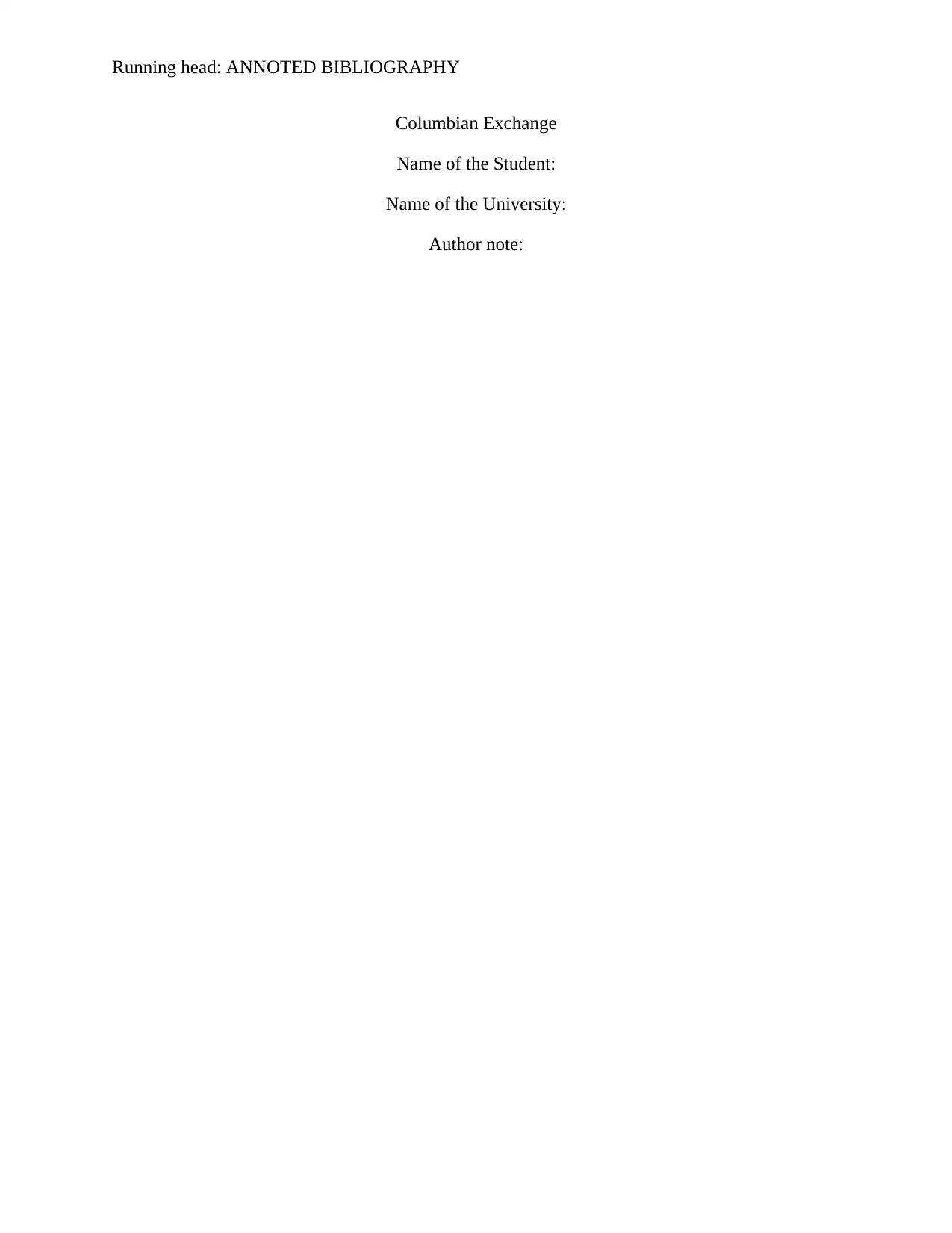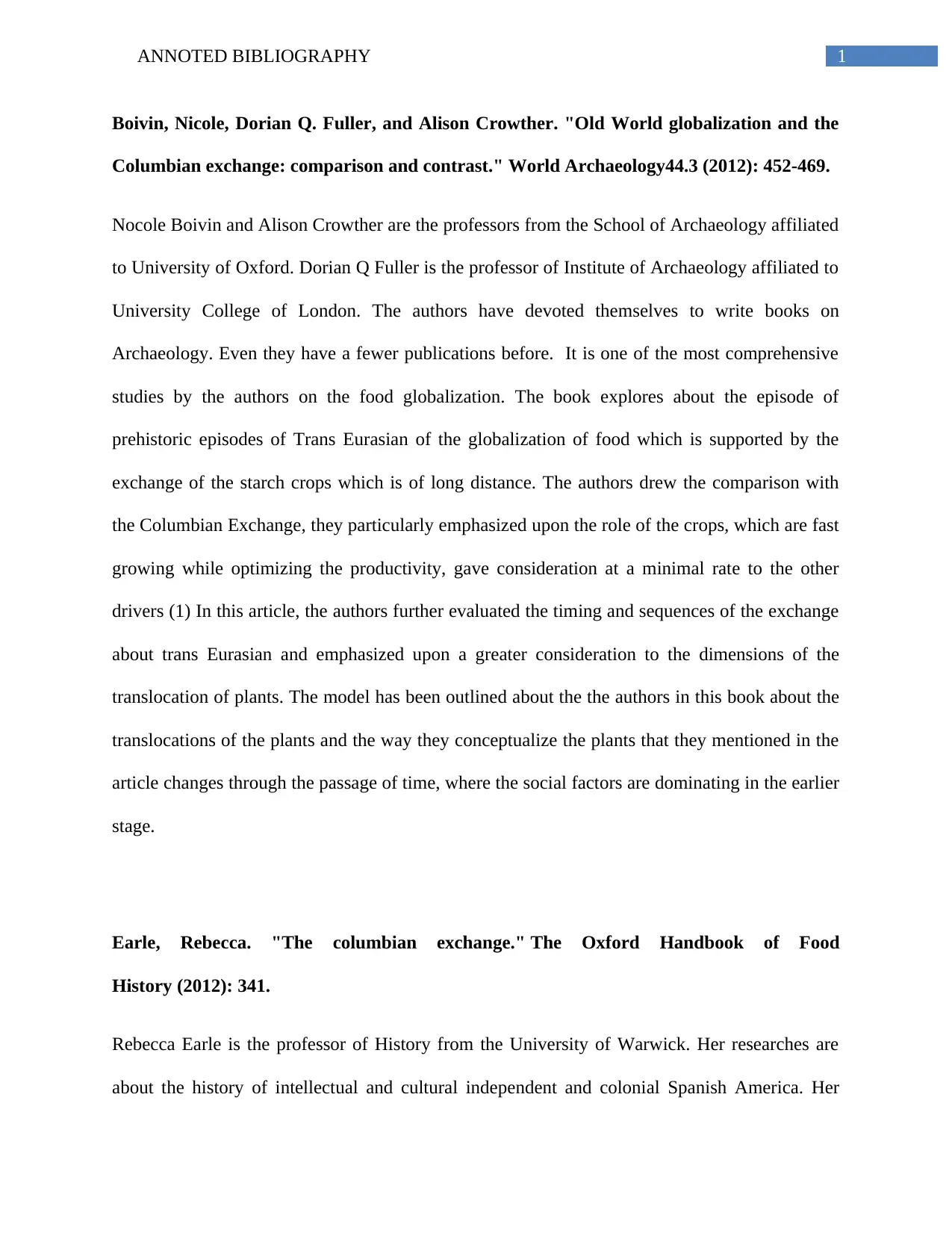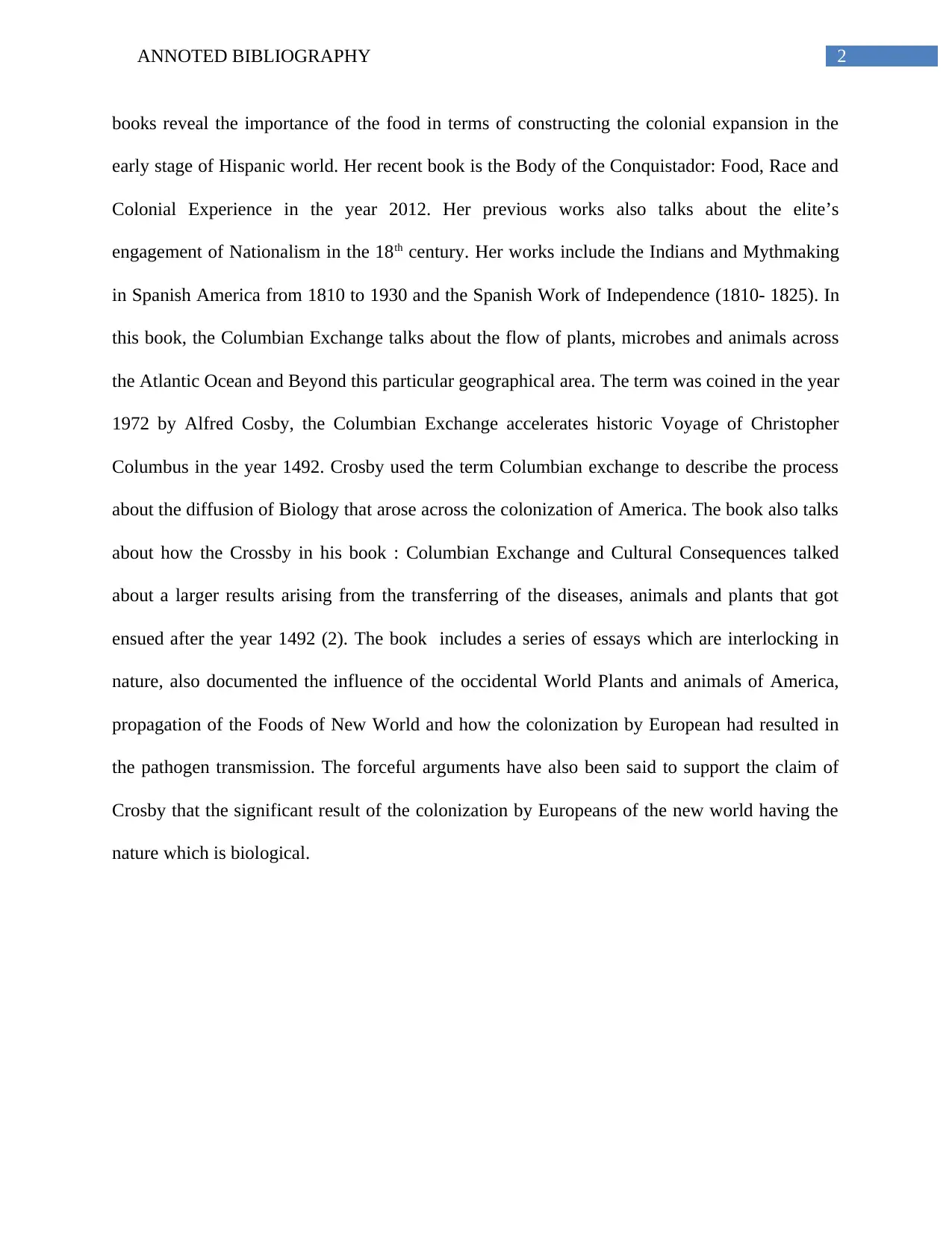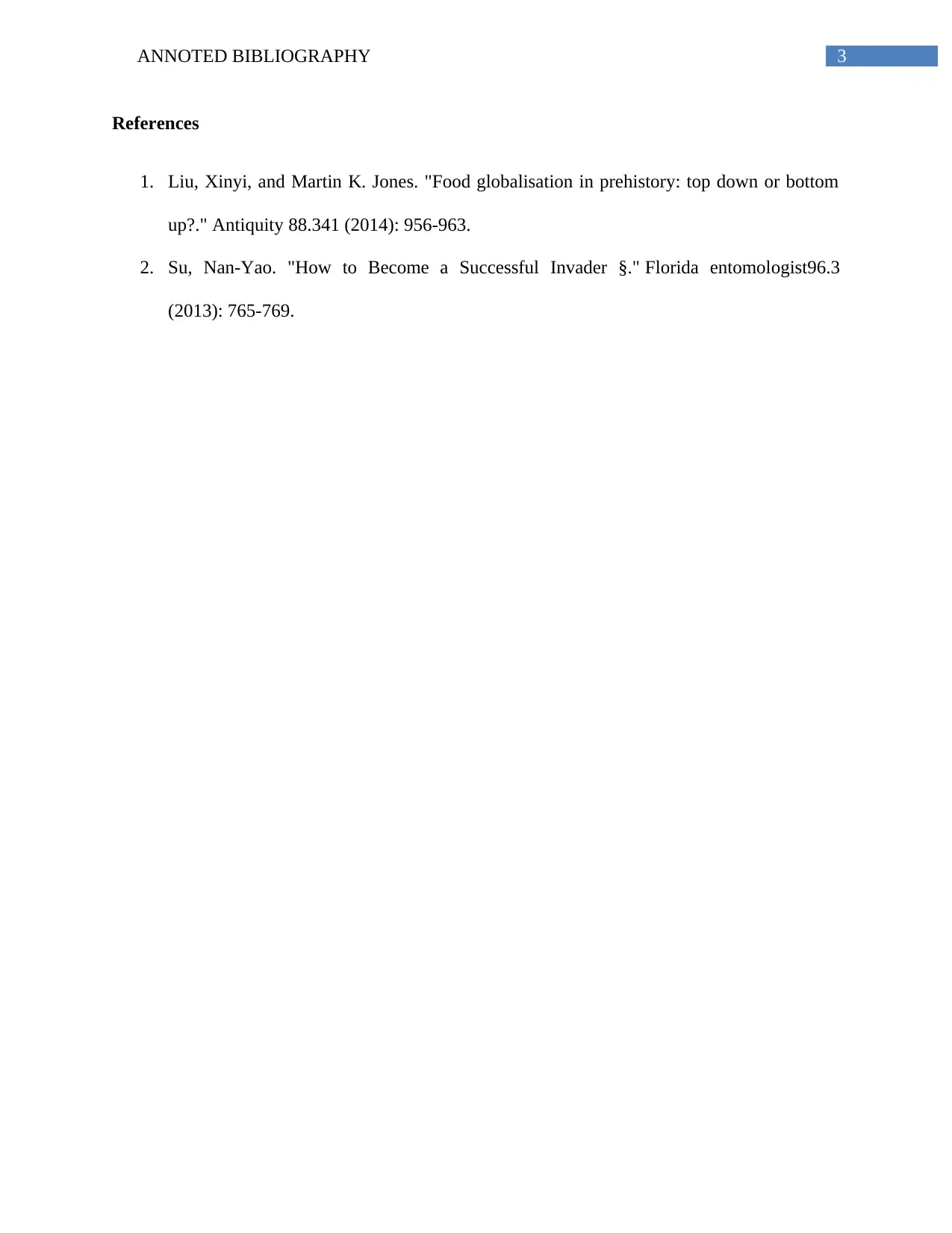University Name: Annotated Bibliography on the Columbian Exchange
VerifiedAdded on 2019/10/31
|4
|678
|332
Annotated Bibliography
AI Summary
This annotated bibliography examines the Columbian Exchange, a pivotal period of global interaction following Christopher Columbus's voyages. It analyzes three key sources: a study comparing the Columbian Exchange to earlier trans-Eurasian food globalization, an overview of the Columbian Exchange discussing the flow of plants, microbes, and animals across the Atlantic, and a study on food globalization in prehistory. The first source, by Boivin, Fuller, and Crowther, explores the exchange of starch crops and compares it to the Columbian Exchange, emphasizing the role of fast-growing crops. The second source, by Earle, defines the Columbian Exchange as the flow of plants, microbes, and animals and highlights the impact of European colonization on the New World. The third source, by Liu and Jones, discusses food globalization in prehistory. The bibliography offers a comprehensive overview of the Columbian Exchange, its biological and cultural consequences, and the historical context of food exchange.
1 out of 4





![[object Object]](/_next/static/media/star-bottom.7253800d.svg)